Full Steam Ahead: The Linux apps that can
Articles and Tips: article
30 Sep 2004
By now, surely all readers of novell Connection have heard of Linux and know it as an operating system of the future. Novell is playing a key role in the proliferation of Linux, the open source operating system, and the time is right to do so.
When the word Linux comes up in a conversation, all too often it is accompanied by questions about just what you can do with it. While this may have been a valid question five or more years ago, a much better question for today is, "What is there that you cannot do with it?"
As the operating system has matured, the number of offerings for it has expanded exponentially. There are word processors, HTML editors, fax applications, CD players and the list goes on and on. It is now safe to say that there are very few niches where applications are available for other operating systems and not also available for Linux.
The following compilation is a shortened version of what you can find on the Web site at www. Novell.com/connection magazine. This was created for two purposes: 1. to illustrate the vast number of possibilities that exist with the operating system, and 2. to offer enough information (contact/Web/etc.) to allow you to further research items that you think can benefit your organization. Space restrictions prevent this list from being 100 percent complete, but every attempt has been made to focus on those items of most meaning to administrators. In condensing and choosing which items to focus on, I am certain that something has fallen through the cracks and overlooked; if you know of such an application that you can't live without, please let us know and it will be included in any future updates on the Novell Connection magazine Web site. Lastly, I would be remiss in not paying a great deal of gratitude to Linux Online (linux.org) for providing a blueprint for the various categories and descriptions, including licensing models, used in this compilation.
What Type of Linux Applications are There?
The number of applications available for the Linux operating system is nothing short of staggering. For the sake of space, the applications here have been divided into five categories that may be of the most interest to system administrators: Administration, Communication, Development, Networking, and Office.
Figure 1
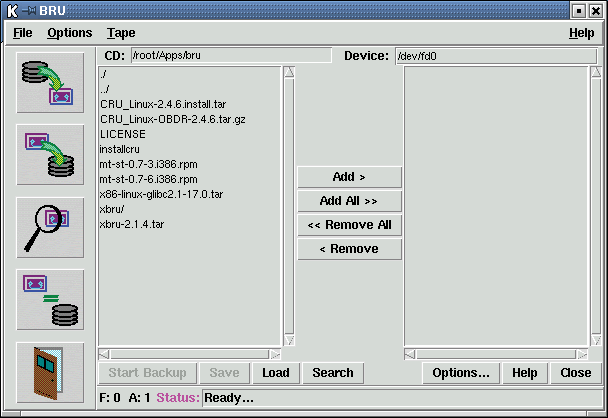
Within each of those five categories, I've listed only my own favorites--a much more complete list can be found in the version of this article posted on the Web site. Again, a debt of gratitude is owed to Linux.org for some of the descriptions and information on licensing; I highly suggest you make this site a regular stop in your browsing journeys.
Administration
As a system administrator, the tools that fall beneath this category can make or break you. If you have a good system backup when the server fails and can restore the data quickly, you're a hero. If you can't do that, you may find yourself trying to get those copies of your resume off of the printer before others notice them.
This provides a convenient segue into the first of five administration subcategories: that of backup applications.
BACKUP
|
Product
|
Description
|
License
|
Site
|
|
AFBackup-Manager |
A Webmin module for easy administration of backup tasks. |
Commercial |
http://www.sourcepole.ch/ sources/software/ afbackup_manager.wbm/ |
|
AMANDA |
Advanced Maryland Automatic Network Disk Archiver |
Free to use but restricted |
|
|
Arkeia |
Enterprise-class network backup for Linux and Unix networks. |
Free for Arkeia Light or Commercial for full version |
|
|
BRU |
A backup solution for Linux and UNIX. |
Proprietary |
http://www.tolisgroup.com/ (See Figure 1.) |
|
CDTARchive or CDTAR |
Graphical Backup program for Linux |
GPL |
|
|
Crash Recovery Kit for Linux |
A crash recovery kit for Linux |
GPL |
|
|
DAR - Disk Archive |
Full and differential backup over several disks, compression, and other features |
GPL |
|
|
KDar - the KDE Disk archiver |
Disk-based archiving and backup GUI for KDE based on libdar. |
GPL |
|
|
NovaNET 8.5 |
Tape backup for single server. Upgrade to network, plus stacker available. |
Commercial |
|
|
Oracle Backup |
An easy-to-use backup and restore utility for Oracle databases. |
Shareware |
|
|
SimpleBackup |
A simple, flexible and very portable directory backup program. |
GPL |
http://migas.mine.nu// index.php?pag=en.myapps &subpag=simplebackup |
|
Storix Backup Administrator Storix Backup Administrator |
Full featured Linux backup product with complete and flexible system recovery. |
Commercial |
Figure 2
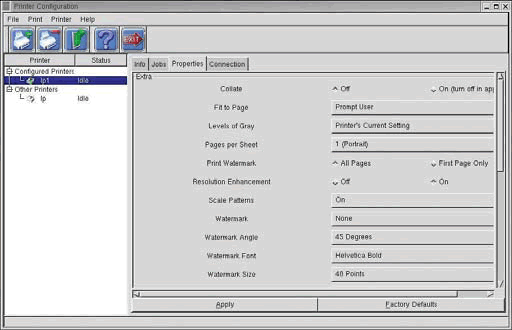
Figure 3
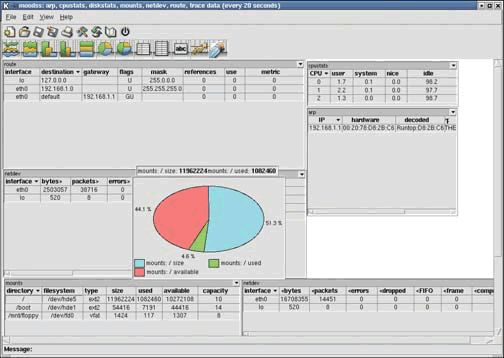
LOG TOOLS
|
Product
|
Description
|
License
|
Site
|
|
apachedb |
Logs Apache transfers into a mysql database. |
GPL |
|
|
AWStats |
Free GNU log file analyzer for advanced web statistics. |
GPL |
|
|
Cascade Historian |
Real-time data storage and query. |
Free for non- commercial use |
http://www.cogent.ca/index.html? http://www.cogent.ca/Software/Historian.html |
|
Cascade Textlogger |
Logs real-time data as ASCII text. |
Free for non- commercial use |
http://www.cogent.ca/index.html? http://www.cogent.ca/ Software/TextLogger.html |
|
FTPWebLog |
An integrated WWW and FTP log reporting tool. |
Freeware |
|
|
Funnel Web Analyzer Enterprise |
A large-scale Web server log analysis tool. |
Commercial |
|
|
http-analyze |
Log analyzer for Web servers |
Free for non- commercial use |
|
|
Lire |
Automatically generate reports from various log files. |
GPL |
|
|
LogDog |
A tool that monitors messages passing through syslogd and takes action based on key words. |
GPL |
|
|
logrep |
A logfile extraction and reporting system. |
GPL |
|
|
NetTracker |
A Web site log file analyzer. |
Proprietary |
|
|
packet2sql |
Pulls packet logs out of log files and converts them to SQL. |
GPL |
|
|
Squij |
Squid logfile analyzer. |
GPL |
|
|
Tcpdstats |
tcpd log analyzer. |
Freeware |
|
|
Visitors |
A fast Web log analyzer. |
GPL |
|
|
Webalizer |
Web server log analysis program. |
GPL |
|
|
Weblogmon |
Web server users and usage monitoring program. |
GPL |
Figure 4
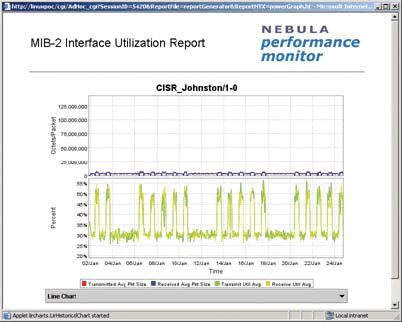
Figure 5
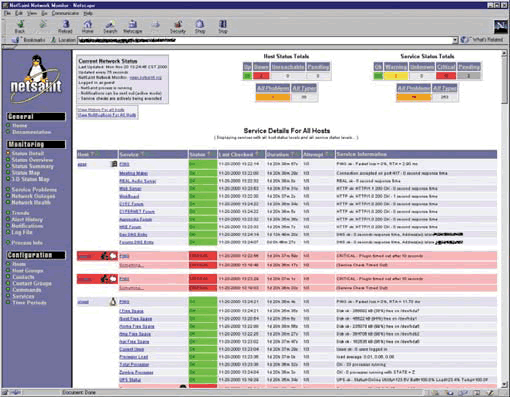
Monitoring Tools
|
Product
|
Description
|
License
|
Site
|
|
Array-util |
Utility to monitor Compaq Smartarray controllers. |
GPL |
|
|
Big Brother |
Highly efficient network monitor. |
Commercial |
|
|
BrightQ |
A printer monitoring and configuration frontend. |
Commercial |
http://www.codehost.com (See Figure 2.) |
|
Checkservice |
A service checker for multiple (remote) hosts. |
GPL |
|
|
Ethereal |
GUI network protocol analyzer. |
GPL |
|
|
Event Monitor Project |
Monitoring tool for heterogeneous networks and systems based on message passing. |
GPL |
|
|
Fidelia Helix |
Low cost fault and performance monitoring of servers, networks, applications. |
Commercial |
|
|
Fidelia NetVigil |
Scalable distributed real-time monitoring software. |
Commercial |
|
|
FileTraq |
A system file monitor. |
GPL |
|
|
fprobe |
A NetFlow probe. |
GPL |
|
|
HostGuardian |
Server, port, process, router, and bandwidth monitoring. |
Commercial |
|
|
imapbiff |
New mail notifier for IMAP accounts. |
GPL |
|
|
InfoWatcher |
A system and log monitoring program. |
Free for non- commercial use |
|
|
IOG |
A network I/O byte grapher made to track KB/MB/GB totals for hours, days and months. |
Artistic License |
|
|
iplog |
TCP, UDP and ICMP logging utilities for Linux. |
GPL |
|
|
ippl |
IP Protocols Logger. |
GPL |
|
|
IPTraf |
An ncurses-based IP LAN monitor. |
GPL |
|
|
JEXN |
Allows you to receive instant exception stack traces in your email if your software crashes. |
GPL |
|
|
Linux Kernel Spinlock Metering |
A kernel patch to incorporate metering of spinlock-usage. |
GPL |
|
|
Loadmeter |
System monitoring app for X11 that displays stats and information. |
GPL |
|
|
meminfo |
Report memory and swap information. |
GPL |
|
|
MIDAS-NMS |
A Network Monitoring and intrusion detection server. |
MIT |
|
|
mon |
Highly configurable service monitoring daemon. |
GPL |
|
|
moodss |
Modular Object Oriented Dynamic Spreadsheet. |
GPL |
http://moodss.sourceforge.net See Figure 3.) |
|
mpstat |
Helps monitoring SMP machines. |
GPL |
moved to http://home.earthlink. net/~joseph-ja/ |
|
Mrtg |
Multi Router Traffic Grapher. |
GPL |
|
|
mtr |
Network diagnostic tool. |
GPL |
|
|
NEBULA |
Hot-spot polling, autodiscovery, basic PM and more. |
Proprietary |
http://www.linmor.com (See Figure 4.) |
|
NetSaint |
A relatively simple active network monitor. |
GPL |
http://www.netsaint.org (See Figure 5.) |
|
Netwatch |
Ethernet Monitor. |
GPL |
|
|
Network Packet Capture Facility for Java |
A set of Java classes that provide an interface |
Mozilla Public License (MPL) |
|
|
Perro |
A set of daemons that log TCP/UDP/ICMP packets. |
GPL |
|
|
phasi (PHP Another System Info) |
Another tool for system info written in PHP. |
GPL |
|
|
PIKT (Problem Informant/Killer Tool) |
An innovative new systems administration paradigm. |
GPL |
|
|
pmem |
Small utility to display memory usage of programs. |
GPL |
|
|
PolyServe Matrix HA |
Data replication high-availability server clustering, failover and load-balancing software-only solution. |
Commercial |
|
|
PPPStatus |
Console-based PPP status monitor. |
GPL |
http://pppstatus.sourceforge.net/ graphic/index.html (See Figure 6.) |
|
Printerspy |
Perl/Tk tool to monitor printers via SNMP. |
GPL |
|
|
ProcMeter3 |
System monitor with multiple graphical outputs. |
GPL |
|
|
RUE |
Resource utilization explorer. |
BSD type |
http://rue.nolimits.ro (See Figure 7.) |
|
sawdog |
A Perl/Expect-based active multiserver watchdog. |
GPL |
|
|
Sensor Sweep Applet |
A GNOME panel applet that monitors system health through the lm_sensors modules. |
GPL |
|
|
SNMP Monitor |
SNMP critical values monitoring. |
GPL |
|
|
Spong |
Simple System/Network Monitoring. |
GPL |
|
|
Sysload |
Monitors and correlates heterogeneous OS, DB and Apps with alerting and trend analysis. |
Proprietary |
|
|
Sysmon |
High performance network monitoring tool. |
Public Domain |
|
|
tcp_wrappers |
Monitors and controls incoming TCP connections |
Freeware |
|
|
Tkload |
TkPerl tool for monitoring load on remote servers using SNMP. |
Artistic |
|
|
TkLogSpy |
An easy and light program to monitor log files. |
GPL |
|
|
XMSGD (X Message Daemon) |
A background program which displays simple text-based messages on your X display. |
GPL |
|
|
Xcounter |
A simple IP traffic monitoring program. |
GPL |
|
|
Xtraceroute |
OpenGL traceroute. |
GPL |
Figure 6
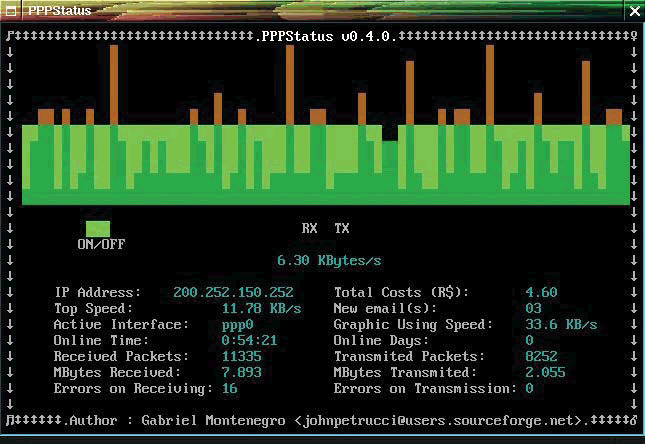
Figure 7
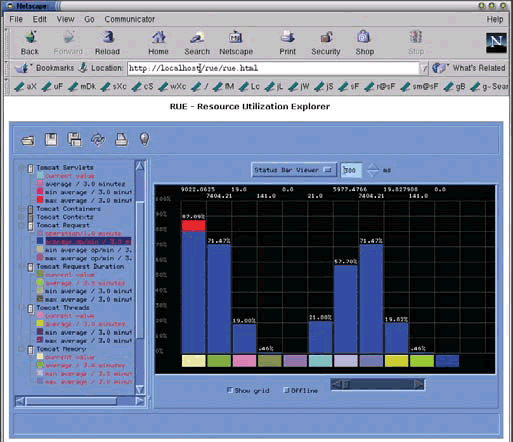
USER MANAGEMENT
|
Product
|
Description
|
License
|
Site
|
|
IC-RADIUS |
A Cistron-based RADIUS server that uses MySQL to store all of its data. |
GPL |
|
|
Jws (Jabber Web Steward) |
Allows users to submit requests for new accounts. |
Artistic License |
|
|
KDirAdm |
KDE LDAP Directory Administrator. |
GPL |
|
|
Linux-PAM |
Linux Pluggable Authentication Modules. |
GPL |
|
|
Maly Soft Directory Manager |
Web-Based LDAP Contact List, UNIX/Windows User and Group Accounts, Mailing List, and Room/Office Locations |
Commercial |
http://www.malysoft.com/cgi-bin/getPage.pl (See Figure 8.) |
|
Webmin Usermonitor |
An interface that provides an overview of all users on the system. |
GPL |
Other Administration
There are a great many other administrative tools available for Linux other than those listed here. In order to conserve space and create a workable list, we chose to focus only on the four categories given. The linux.org site also contains administrative listings for a handful of other categories.
Communication
Second only to administration in terms of making life for a system administrator bearable, the communication tools are necessary for users to interact effectively with one another and with the outside world. The three categories focused on here are conferencing, fax and phone applications.
CONFERENCING
|
Product
|
Description
|
License
|
Site
|
|
AndyChat |
A multi-protocol curses-based console chat program. |
Freely distributable |
|
|
GnomeMeeting |
Videoconferencing application. |
GPL |
http://www.gnomemeeting.org/ (See Figure 9.) |
|
Silky |
An easy to use graphical SILC client. |
GPL |
Figure 8
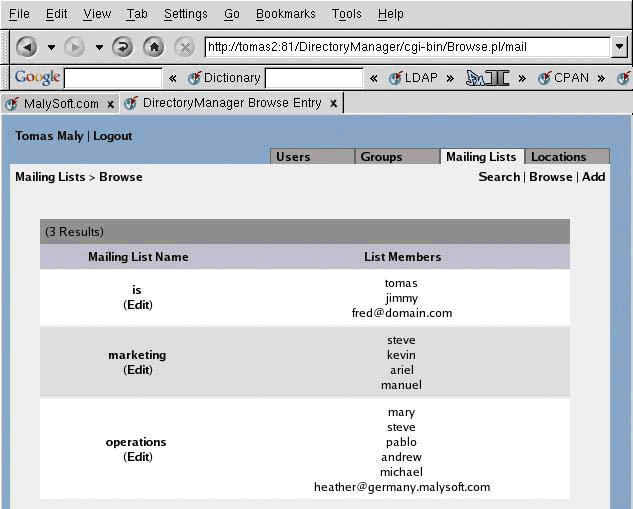
Figure 9
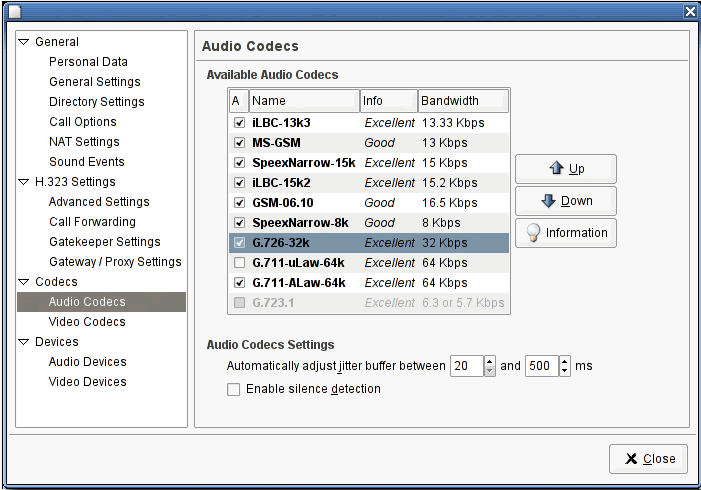
FAX
|
Product
|
Description
|
License
|
Site
|
|
Fax2Send |
Fax Client Server for Linux. |
Proprietary |
|
|
LightningFAX |
Enterprise Fax Server. |
Proprietary |
http://www.faxserver.com/ products/lightningfax/features.htm |
|
Pyla |
A multiplatform Hylafax Client. |
GPL |
PHONE
|
Product
|
Description
|
License
|
Site
|
|
AWAG |
A simple dial and voice-put program. |
File Download |
|
|
Bluel VMail |
A "semi-complete" voicemail system. |
GPL |
|
|
CapiSuite |
Python scriptable CAPI ISDN application including multi user answering machine and fax scripts. |
GPL |
|
|
KAM2 |
K Answering Machine for ISDN lines. |
GPL |
|
|
KRad |
KDE Phone Phreaking Utility. |
GPL |
|
|
PACER Predictive Dialer |
Call center phone system and predictive dialer. |
Commercial |
|
|
WAPMail |
A completely customizable email interface for mobile phones with full access to features. |
Commercial |
Development
If you're like most administrators, you've discovered that it is not enough to just run over-the-counter applications; sometimes you have to create your own. There are loads of development tools available for Linux, and they have been divided into the following subcategories: HTML Editors, Languages, Libraries and Tools.
HTML EDITORS
|
Product
|
Description
|
License
|
Site
|
|
Aspire |
A server side framework for developing HTML applications that access corporate data sources. |
Proprietary |
|
|
Bluefish |
A high quality, highly functional, HTML editor. |
GPL |
|
|
MML |
An HTML templating preprocessor. |
GPL |
|
|
SCREEM |
Site Creating& Editing Environment. |
GPL |
Figure 10
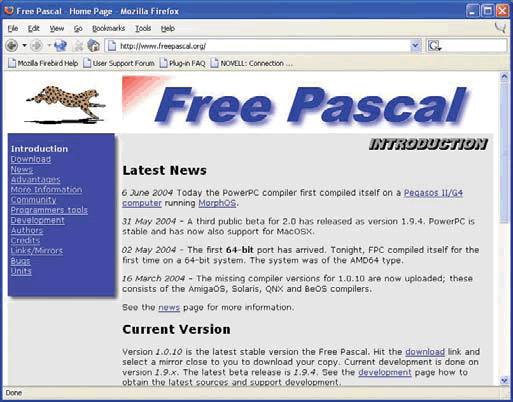
Figure 11
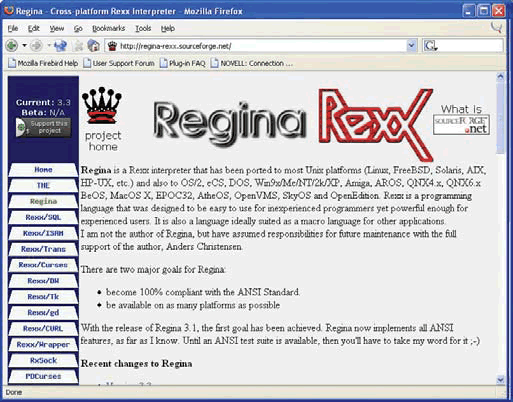
LANGUAGES
|
Product
|
Description
|
License
|
Site
|
|
Amzi! Prolog + Logic Server Free |
Logicbase development tools/libraries for standalone and Web applications. |
Proprietary |
|
|
ElastiC |
A very-high level OO language, |
Open Source |
|
|
Emu (Embeddable Utility Language) |
A clean, fast, flexible programming language. |
MIT/X Consortium License |
|
|
Freepascal |
Free Pascal compiler. |
GPL (compiler + tools) and LGPL (libraries) |
http://www.freepascal.org/ (See Figure 10.) |
|
JS/CORBA Adapter |
Provides a mechanism for arbitrary JavaScript objects to interact with each other. |
Mozilla Public License (MPL) |
|
|
Kew |
A simple, embeddable, container-based, object-oriented programming language. |
Lesser General Public License (LGPL) |
|
|
Onyx |
A powerful stack-based, multi-threaded, interpreted, general purpose programming language. |
BSD License |
|
|
pENC (Perl Source Code Encryptor) |
As the name implies, it is used to encrypt Perl Source Code. |
Commercial |
|
|
Perl |
A high-level programming language well suited to system administration tasks. |
Artistic License |
|
|
PHP |
An open source general-purpose scripting language that is especially suited for web development. |
The PHP License |
|
|
Regina Rexx |
A Rexx interpreter that has been ported to most Unix platforms. |
LGPL |
http://regina-rexx.sourceforge.net/ (See Figure 11.) |
|
Turbo Vision |
A C++ library that provides a nice user interface for console applications. |
GPL |
Figure 12
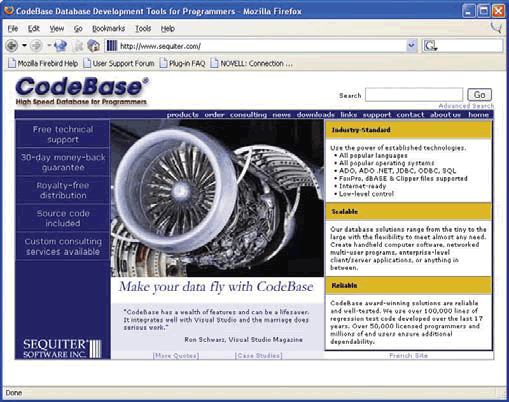
Figure 13
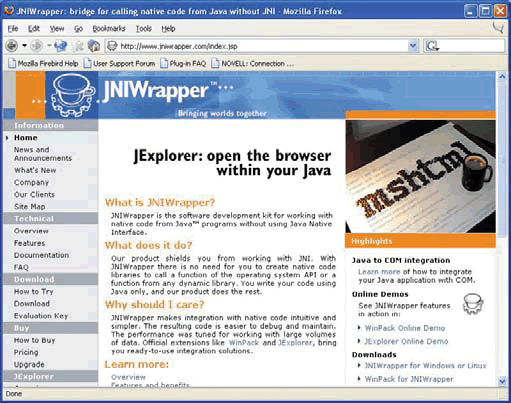
LIBRARIES
|
Product
|
Description
|
License
|
Site
|
|
Adevs |
A C++ library for developing discrete event simulations. |
LGPL |
|
|
CASElow |
A library that intercepts library calls, and makes the filesystem appear to be case insensitive. |
GPL |
|
|
CodeBase Database Development Tools |
Fast database engine for most programming languages and operating platforms. |
Commercial |
http://www.sequiter.com/ (See Figure 12.) |
|
Cogent API |
An interface for Cascade and other Cogent software. |
Free for non-commercial use |
|
|
DObjectLibrary C++ |
A working Java-like library. |
GPL |
|
|
Flate |
A template library used to deal with HTML code in CGI applications. |
GPL |
|
|
gtkmm |
A powerful C++ binding for the GNOME libraries. |
LGPL |
|
|
HawkNL (Hawk Network Library) |
Game oriented network library for Linux/Unix and Windows 9x/ME/NT/2000. |
LGPL |
|
|
Java-GNOME |
A Java binding for the GTK and GNOME libraries. |
LGPL |
|
|
JNIWrapper |
Bridge technology that allows calling functions from native APIs or from any native DLLs. |
Commercial |
http://www.jniwrapper.com/index.jsp (See Figure 13.) |
|
Lesstif |
An implementation of the OSF/Motif standard GUI toolkit for X11. |
LGPL |
|
|
MegaZeux |
A game creation system with ASCII graphics and a scripting language. |
GPL |
|
|
netwib |
Provides sniff, spoof, client, server and most functions needed by network programs. |
LGPL |
|
|
Netxx |
A modern C++ network programming library. |
BSD |
|
|
Next Generation POSIX Threading |
An M:N threading model for Linux. |
LGPL |
http://oss.software.ibm.com/ developerworks/opensource/pthreads/ |
|
POE (Perl Object Environment) |
A Perl framework for networking and multitasking. |
Perl Artistic/GPL |
|
|
State Threads |
A library of writing fast and highly scalable Internet applications. |
MPL /GPL |
|
|
The pyxhtml Python XHTML document class |
Can be used to generate XHTML documents. |
GPL |
|
|
YACLib |
A data structures library written in C. |
GPL |
http://www.angelfire.com/linux/ docinclude/yaclib/index.html |
|
Zipios++ |
A java.util.zip-like C++ library for reading and writing Zip files. |
LGPL |
Figure 14
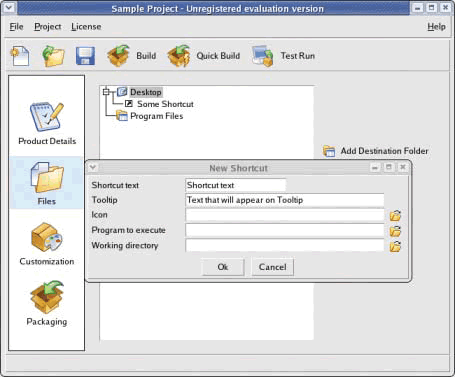
Figure 15
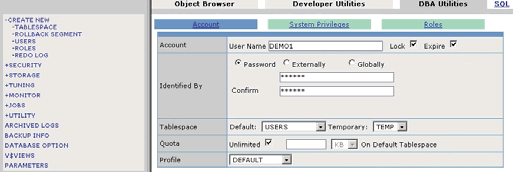
TOOLS
|
Product
|
Description
|
License
|
Site
|
|
Aegis |
A transaction-based software configuration management system. |
GPL |
|
|
Aware Reports |
Multiplatform high-speed template based report generator. |
Commercial |
|
|
BitRock InstallBuilder |
Tool to create easy to use installer for Linux applications. |
Commercial |
http://www.bitrock.com/ (See Figure 14.) |
|
Bugzero Bug Tracking System |
Feature complete, platform and database system independent. |
Free but restricted |
|
|
Builder Xcessory PRO. |
A user interface builder for Motif. |
Commercial |
|
|
CLIP |
Clipper/XBase compatible compiler. |
GPL |
|
|
DBAConnect |
Fast, Secure Remote Administration of your Database. |
Commercial |
http://www.datasparc.com/ (See Figure 15.) |
|
Dynamic Probes (Dprobes) |
A generic and pervasive system debugging facility. |
GPL |
http://www-124.ibm.com/developerworks/ oss/linux/projects/dprobes/ |
|
Easy View (Ezvu) |
Converts the given set of C files into HTML files. |
GPL |
|
|
Ektron eMPower for ColdFusion |
A full-featured, easy-to-use Web content management system. |
Commercial |
|
|
Genscreen |
C/C++ Code Generator that generates ncurses screens. |
Proprietary |
|
|
HuC |
A PC Engine C compiler. |
Proprietary |
|
|
JavaReadline |
Adds readline support to java console applications. |
LGPL |
|
|
Jess |
A rule engine and scripting environment written entirely in Java. |
Proprietary |
|
|
KlassModeler |
An UML-like tool for creating class diagrams. |
GPL |
|
|
Kylix |
Radical Application Development Environment for Linux. |
Proprietary |
|
|
MagicDraw |
UML modeling tool for object-oriented software development. |
Commercial |
http://www.magicdraw.com/ (See Figure 16.) |
|
MIB Smithy |
Visual SNMP MIB Designer/Compiler/Editor Tools. |
Commercial |
|
|
Omnis Studio |
A powerful RAD tool for Windows, Linux, Solaris, and MacOS. |
Commercial |
|
|
OSE |
Provides a framework for building event driven systems, Web-based services etc. |
QT Public License (QPL) |
|
|
Ozibug |
A platform-independent, web-based bug tracking system implemented as a Java servlet. |
Free but restricted (Community Edition) |
|
|
QuickBugs Linux |
Help Authoring For Linux Applications. |
Commercial |
|
|
QuickCRC Linux |
Object-Oriented Software Design Using CRC Cards. |
Commercial |
|
|
QuickHelp Linux |
Help Authoring For Linux Applications. |
Commercial |
|
|
QuickUML Linux |
UML "made easy". |
Commercial |
|
|
Revolution |
A fully featured cross-platform development environment. |
Commercial |
|
|
Stream Analyzer (Stan) |
A console application to generate statistical information about a stream. |
BSD License |
|
|
Stunnix Perl-Obfus |
An advanced and reliable obfuscator (scrambler/mangler) for Perl source code. |
Commercial |
|
|
The HT Editor |
A file editor/viewer/analyzer for executables. |
GPL |
|
|
Visual SlickEdit |
A multilanguage integrated development environment and advanced code editor. |
Commercial |
http://www.slickedit.com (See Figure 17.) |
|
WxDesigner |
A dialog editor and RAD tool for the wxWindows C++ library. |
Proprietary |
Figure 16
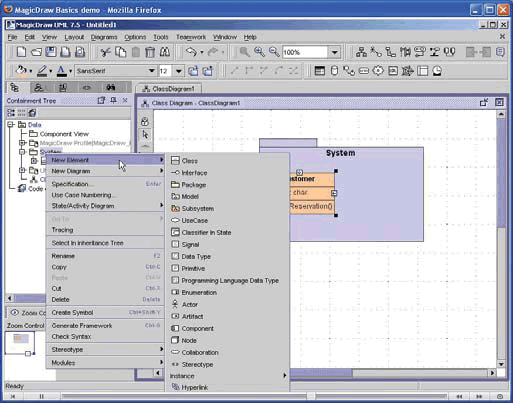
Figure 17
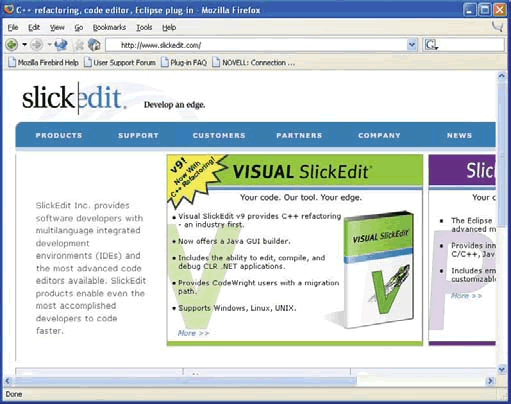
Hopefully, if nothing else was accomplished, this list convinced you that there is an enormous wealth of applications available for Linux.
Networking
No one reading this issue of Novell Connection magazine is of the belief that the future lies in standalone computers. You must have a network in this day and age even if you are only a two-person company. Within Linux, there is a superdaemon known as init which is responsible for bringing up the services required at specific runlevels and maintaining the integrity of the system. The init daemon will start and stop other daemons such as the system logger (syslogd), the swapper (kswapd) and so on. One of the daemons it starts is a superdaemon over networking services: inetd. This superdaemon can start any networking service and offer those that any network would expect and need:
DNS is a Domain Name Service/Server which allows hosts to access a server that performs name resolution for them. First introduced in 1984, it allows the host names to reside in a database that can be distributed among multiple servers. The distribution decreases the load on any one server and allows for more than one point of administration. It also allows the database size to be virtually unlimited because more servers can be added to handle additional parts of the database. More information can be found at: www.linux.org/docs/ldp/howto/DNS-HOWTO.html.
Sendmail is a service--daemon--that allows for the transfer of electronic mail between hosts using the Simple Mail Transfer Protocol (SMTP). Because SMTP is the protocol involved, and any number of programs can communicate with it (sendmail being but one), Sendmail is said to be an agent of SMTP--a mail transfer agent to be exact. This is important because Sendmail is not--and was never intended to be--what the user interacts with. The user interacts with an e-mail program (such as mail), and Sendmail is merely a service running in the background that sends completed e-mail from one location to another. The latest version of Sendmail can be downloaded from www.sendmail.net.
Apache is a World Wide Web server to Linux in the same way that Internet Information Server is a WWW server for Windows NT/2000. You can devote years to learning the intricacies of this service. Apache is included with most Linux implementations, but if you do not have it, you can get it from www.apache.org.
Figure 18
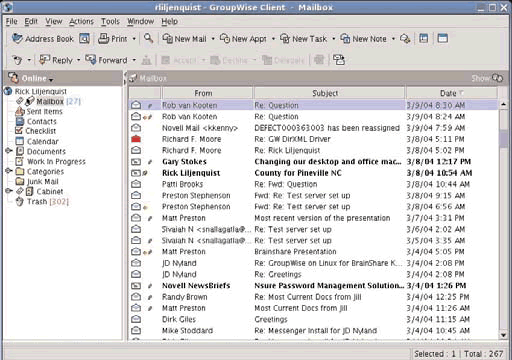
Office Applications
Having a solid operating system is but one link in the chain to wrest control of the network. In order for the operating system to work its way onto the desktop, it has to be able to offer the services that the user needs. When it comes to the user's daily environment, that can be summed up with the functions that appear in most officetype applications: word processors, databases, spreadsheets, etc. The following packages offer the functionality on Linux that you expect and need in an office environment:
OFFICE PRODUCTIVITY SUITES
|
Product
|
Description
|
License
|
Site
|
|
Abacus |
Spreadsheet for Linux/XWindows written in Tcl/Tk and C/C++. |
Free to use but restricted |
http://www-cad.eecs.berkeley.edu/ HomePages/aml/abacus/abacus.html |
|
BrowserCRM |
Web-native CRM, E-mail, Collaboration and Invoicing application. |
Commercial |
|
|
EIOffice (Evermore Integrated Office) |
Full-featured, integrated Office suite |
Commercial |
|
|
GroupWise 6.5 |
Premier communication and collaboration tool |
Commercial |
http://www.novell.com/products/groupwise (See Figure 18.) |
|
OmniChex |
Manage info with hyperlinked checklists securely on the Web using your Web browser. |
Commercial |
|
|
OpenOffice.org |
The open source release of Sun's StarOffice |
LGPL |
|
|
Slidemaker |
Create a Powerpoint-like slide show in pdf for conference presentations. |
GPL |
|
|
SqlDESKTOP |
Office productivity software for Linux desktops. |
Commercial |
|
|
StarOffice |
The most well-known Linux office package. |
SUN Binary Code License |
The Future
Hopefully, if nothing else was accomplished, this list convinced you that there is an enormous wealth of applications available for Linux. Due to space constraints, only seven categories were even addressed and we were unable to include such categories as security, 3D modeling, CAD or a plethora of others. As time goes on, and as Linux continues to work its way into the network, onto the desktop, onto laptops and PDAs, it is safe to say that this list will only grow at an exponential rate.
For more information or to download an eval copy of GroupWise for Linux visit www.novell.com/products/groupwise/
When is it time for you to consider migrating your environment to Linux? At what point in the future will the operating system be stable enough for you to give it serious thought? That future moment--that magic time is now! red
--Emmett Dulaney is the author of several books on Linux, Unix and certification. He is a former partner in Mercury Technical Solutions.
Linux Integration
As an administrator, your primary concern is with getting data where it needs to be when it needs to be there. The fact that users are using Windows or Linux or Macs is of little relevance on a daily basis as long as everyone can do the job they need to do. Your headaches come when the interaction that should be there isn't.
Thankfully, in today's networking environment integration is mostly a matter of understanding the options and knowing what can be done. There are four ways to establish integration with Linux. The first is to do everything you can to sidestep the issue and get the results you need without committing all the way. The second is to integrate the Linux hosts with the world of Windows, and the third is to integrate with NetWare. For those who don't fall into either category, the fourth approach is to integrate Linux with Macs.
A number of solutions exist to provide interaction, but not necessarily integration. One such solution is VMware from VMware, Inc. This software is available in both a workstation and server version. Essentially, what it does is allow you to run virtual sessions of multiple operating systems at the same time on the same machine(s). In so doing, you can run Windows at the same time you are running Linux and access the files that each need in order to be able to work within separate environments. Information on VMware can be found at www.vmware.com, with the features for workstation at www.vmware.com/products/desktop/ws_features.html and the specifications (detailing what operating systems it can run) at: www.vmware.com/products/desktop/ws_specs.html. The advantage to this solution is that it allows you to run many different operating systems and it can be a solution when migrating to Linux. An alternative to this is Win4Lin from NeTraverse (www.netraverse.com/).
One of the most common heterogeneous network environments currently in existence is that of Linux/Unix and Windows. The "Windows" can be in the form of workstations (9x, NT, XP, etc.) or servers (NT/2000/2003). Regardless of the type of Windows used, the needs are the same (file sharing and printing) and the solutions are essentially the same: Samba or Services for Unix. Samba allows a Linux host to act as a file and print server for the Windows (and OS/2) world. It is made freely available under the GNU General Public License and can be found at: www.samba.org/.
Services for Unix is Microsoft's answer to Samba. Originally available for a fee, it became free recently with the release of version 3.5. More information, as well as download links can be found at www.microsoft.com/windows/sfu/default.asp.
Older NetWare implementations (those that you are likely to have around only for legacy purposes) below version 4.0 used a bindery as their primary file system. Integration with these servers is possible with MARSnwe--the MARS NetWare emulator. This allows the Linux host to act as an IPX router and run most utilities. There are a large number of solutions for integration between newer versions of NetWare and Linux. Go to www.novell.com/linux/ for up-to-the-minute information on migrating to Linux, and using Nterprise Linux Services for integration. Downloads of available solutions can be found at www.novell.com/linux/download_linux.html.
The solution needed to communicate between MacOS clients and Linux is Netatalk. This software suite allows the Linux host to act as a file/print server for AppleTalk clients. It accomplishes this by running three daemons: atalkd (the network manager), afpd (the filing protocol), and papd (the printing protocol). Like Samba, Netatalk is free, and released under the GNU General Public License. It can be found and downloaded from http://netatalk.sourceforge.net.
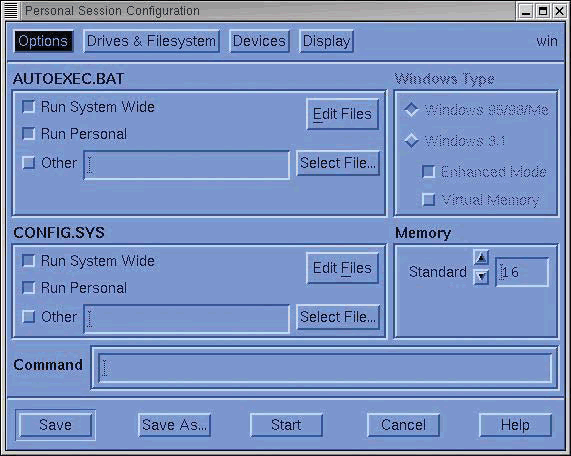
Linux Certifications
One of the best ways to verify your skills in the IT realm is by having a third party authenticate your knowledge. It is this approach that has led to the highly successful CNE certification from Novell, and dozens of other examples. It is also the raison d'ętre behind numerous Linux exams.
Within the Linux world, certifications tend to fall within one of three categories, based on skill level: beginning administrator, intermediate and advanced. For beginning administrators is the Linux+ exam from CompTIA (pass one multiple-choice exam and you are certified for life) and the LPIC Level 1 certification from the Linux Professional Institute (two exams that are multiple choice as well as fill in the blank). More information on these two certifications can be found at www.comptia.org/certification/linux/default.asp and www.lpi.org/en/lpic.html, respectively.
Intermediate certifications are available from LPI (LPIC Level 2), and SUSE (SCLP -- SUSE Certified Linux Professional). The latter requires you to first be LPI Level 1 certified, then builds on it by testing only SUSEbased knowledge. More information on the LPI offering can be found at www.lpi.org/en/lpic.html, while information on SCLP can be found at www.suse.com/us/business/services/training/certification/sclp.html.
When it comes to advanced certifications, the CLE (Certified Linux Engineer) from Novell requires passing a performance-based exam and focuses on the application of higher skills more than other entries. Information on this certification can be found at http://www.novell.com/training/certinfo/cle/.
* Originally published in Novell Connection Magazine
Disclaimer
The origin of this information may be internal or external to Novell. While Novell makes all reasonable efforts to verify this information, Novell does not make explicit or implied claims to its validity.